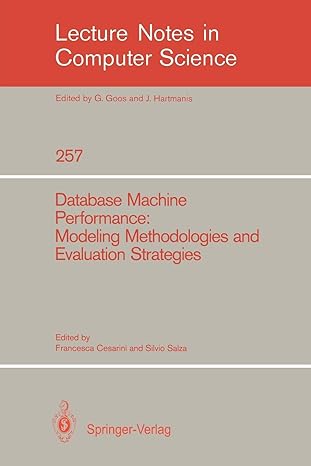Please advise what needs to be typed to merge the project3_print to the skeleton file below. PLEASE TYPE
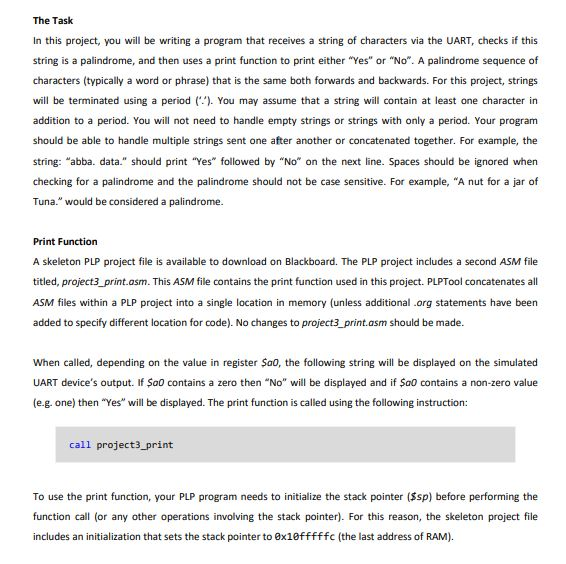
skeleton plp is below.
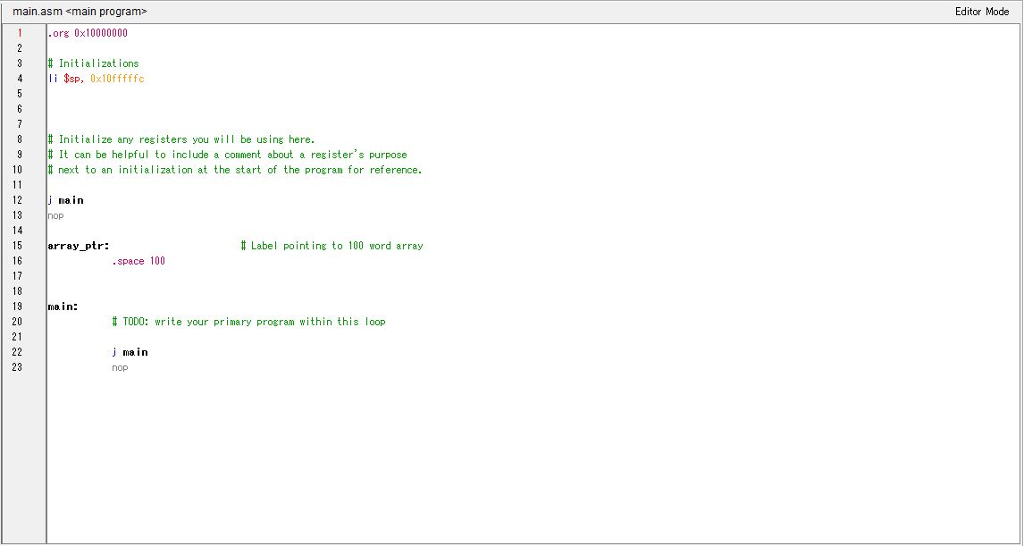
Project3_print is below.
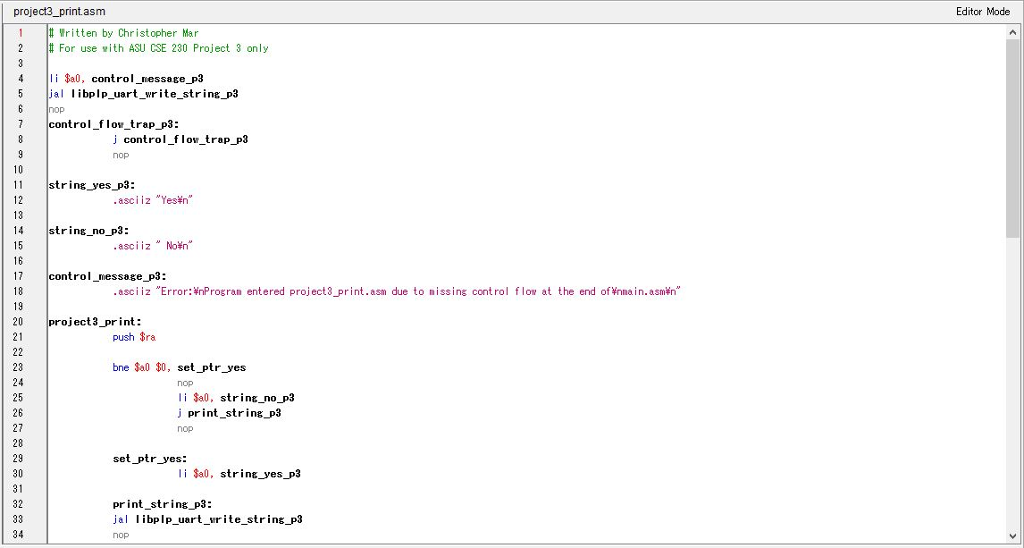
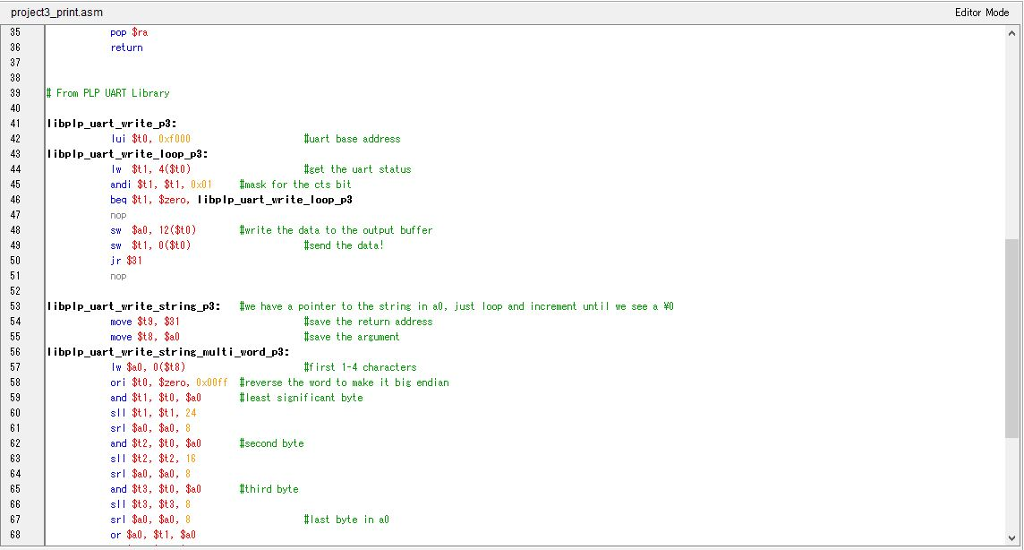

The Task In this project, you will be writing a program that receives a string of characters via the UART, checks if this string is a palindrome, and then uses a print function to print either "Yes or "No". A palindrome sequence of characters (typically a word or phrase) that is the same both forwards and backwards. For this project, strings will be terminated using a period (). You may assume that a string will contain at least one character in addition to a period. You will not need to handle empty strings or strings with only a period. Your program should be able to handle multiple strings sent one after another or concatenated together. For example, the string: "abba. data." should print "Yes" followed by "No" on the next line. Spaces should be ignored when checking for a palindrome and the palindrome should not be case sensitive. For example, "A nut for a jar of Tuna." would be considered a palindrome Print Function A skeleton PLP project file is available to download on Blackboard. The PLP project includes a second ASM file titled, project3_print.asm. This ASM file contains the print function used in this project. PLPTool concatenates all ASM files within a PLP project into a single location in memory (unless additional org statements have been added to specify different location for code). No changes to project3 print.asm should be made. When called, depending on the value in register SaO, the following string will be displayed on the simulated UART device's output. If Sa0 contains a zero then "No" will be displayed and if Sao contains a non-zero value (e-g. one) then "Yes" will be displayed. The print function is called using the following instruction: call project3_print To use the print function, your PLP program needs to initialize the stack pointer (Ssp) before performing the function call (or any other operations involving the stack pointer). For this reason, the skeleton project fie includes an initialization that sets the stack pointer to 8x10fffffc (the last address of RAM). The Task In this project, you will be writing a program that receives a string of characters via the UART, checks if this string is a palindrome, and then uses a print function to print either "Yes or "No". A palindrome sequence of characters (typically a word or phrase) that is the same both forwards and backwards. For this project, strings will be terminated using a period (). You may assume that a string will contain at least one character in addition to a period. You will not need to handle empty strings or strings with only a period. Your program should be able to handle multiple strings sent one after another or concatenated together. For example, the string: "abba. data." should print "Yes" followed by "No" on the next line. Spaces should be ignored when checking for a palindrome and the palindrome should not be case sensitive. For example, "A nut for a jar of Tuna." would be considered a palindrome Print Function A skeleton PLP project file is available to download on Blackboard. The PLP project includes a second ASM file titled, project3_print.asm. This ASM file contains the print function used in this project. PLPTool concatenates all ASM files within a PLP project into a single location in memory (unless additional org statements have been added to specify different location for code). No changes to project3 print.asm should be made. When called, depending on the value in register SaO, the following string will be displayed on the simulated UART device's output. If Sa0 contains a zero then "No" will be displayed and if Sao contains a non-zero value (e-g. one) then "Yes" will be displayed. The print function is called using the following instruction: call project3_print To use the print function, your PLP program needs to initialize the stack pointer (Ssp) before performing the function call (or any other operations involving the stack pointer). For this reason, the skeleton project fie includes an initialization that sets the stack pointer to 8x10fffffc (the last address of RAM)











